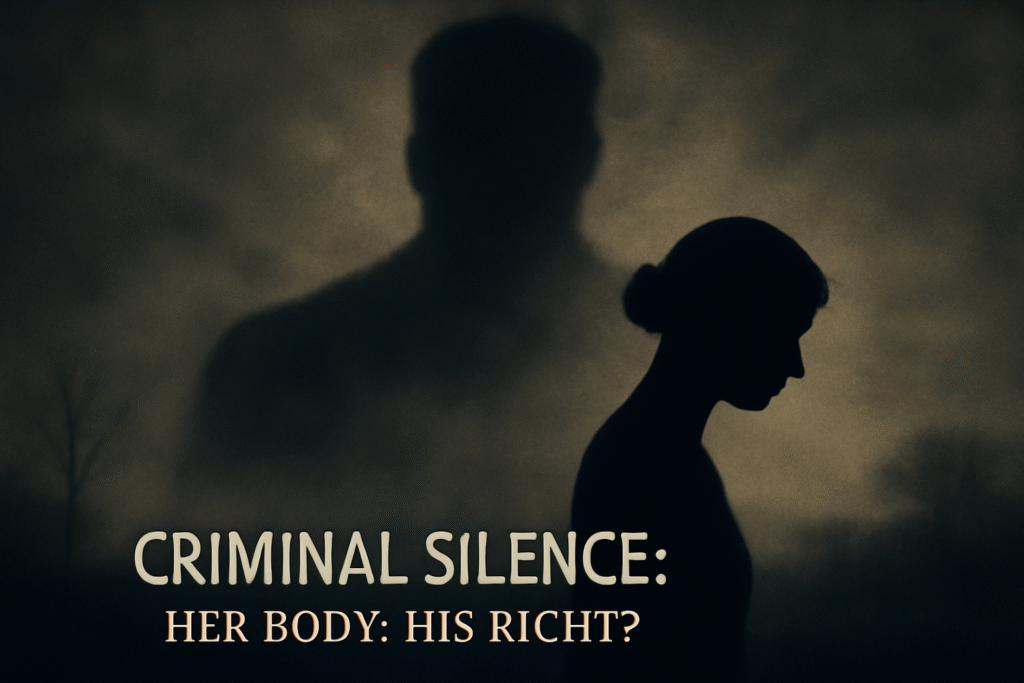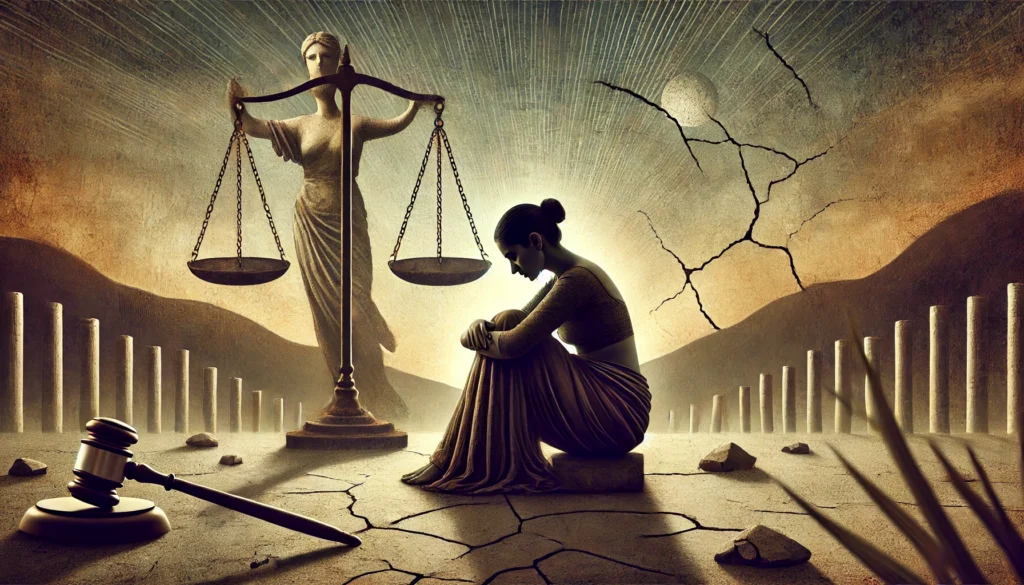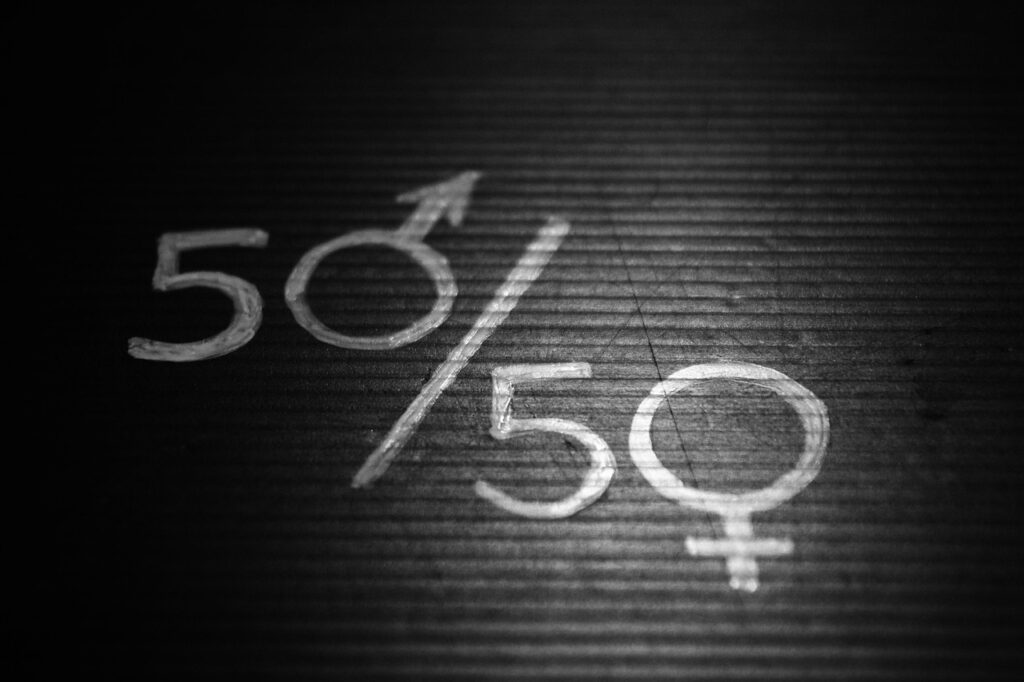Published On: August 18th 2025
Authored By: Mandadapu Charitha Chowdary
Indian Institute of Management, Rohtak
Abstract
Capital punishment in India is a highly disputed topic, existing at the crossroads of the law, morality, and social justice. In this article, the author goes into a thorough study of the legal structure behind capital punishment, the rationale behind it, and the legal aspect that continues to be debated as to whether it is relevant in a democratic society that subscribes to the constitution. This paper critically examines the use of the death penalty, its consistency with the constitutional pillars, and the urgent need to institute structural change as a result of an analysis of landmark judicial decisions, legislative action, statistical findings, and a comparative global view. It claims that although the death penalty to date remains legally functional (and that, therefore, it is not abolished in any instance), its uneven application, socio-economical discrimination, and ethical value judgments require its reconsideration, trying to suggest the restrained approach of the judges, proportionality, and its possible future abolishment based on alternative sentencing models.
Introduction
Capital punishment in India, a colonial legal heritage, remains a controversial issue with regard to scholarly and popular opinion, balancing contradictions between retribution and deterrence with human rights and ethics, and moral philosophy. Regulated by legislations like the Indian Penal Code, 1860 (IPC) and the Code of Criminal Procedure, 1973 (CrPC), death penalty is now seen as an extreme penalty case and could only occur in rarest of rare cases as propounded by the Supreme Court in Bachan Singh v. State of Punjab (AIR 1980 SC 898) Regardless of these limiting constructs, usage of this framework poses serious question marks of consistency, fairness and adherence to the emerging international human rights standards. The paper aims to revisit the legal, moral, and social aspects of the death penalty in India, addressing its historical development, court interpretations, philosophical debate, and possible ways of reform. It will synthesise judicial precedents, empirical data, and theoretical arguments, and is expected to add to the debate on the need to strike a balance between justice and humanity in India.
Historical and Lawful Framework
Legal Tradition of the Colonial Period and Statutory Provisions
The death penalty in India dates back to the British colonial days, where it was used as a tool of control and subjugation. Indian Penal Code, enacted in 1860, also codifies the punishment of an execution that may also be given after committing a severe crime, e.g., murder (Section 302), waging war against the government (Section 121), or acts of terrorism (e.g., the Unlawful Activities (Prevention) Act, 1967, 1967 (UAPA)). It is within this procedural form defined in the Code of Criminal Procedure, 1973, that death sentences are to be confirmed by the High Court (Section 366) as procedural checks on judicial judgment. Moreover, Article 72 of the Indian Constitution empowers the President to award mercy, which has given a check on the irreversible punishment in the form of a constitutional guarantee. Stemming as it is formulated to a multi-tiered system at once representing an effort to strike the balance between punitive action and counter-action against uncontrolled and arbitrary the system must be viewed with misgivings in respect to its compatibility with modern ideas of democracy.
Rarest of Rare Doctrine
Bachan Singh v. became the first case to uphold the death penalty as being constitutional. In State of Punjab (AIR 1980 SC 898), the Supreme Court introduced the doctrine of the rarest of the rare to restrict the application of the death penalty to a rare occasion. In doing this, the principle requires the careful weighing of the aggravating factors that can include the brutality of the crime committed or its impact on society against the mitigating factors such as the background of the offender or his ability to mend. Machhi Singh v. was further elaborated upon the doctrine. State of Punjab (AIR 1983 SC 957) classified aggravating factors, including the helpless condition of victims or that the nature of the crime was premeditated, which would then be followed by judicial discretion.
Application of the doctrine, however, has been characterized by inconsistency. This was in the case of Santosh Kumar Bariha v. State of Orissa (2014). In Mukesh vs. State of NCT of Delhi (Nirbhaya Case) (2017) 6 SCC 1, the Supreme Court commuted a death sentence on the basis that the death sentence convict could undergo reformation. It has affirmed the sentence after the Nirbhaya Rape Case, citing the severity of crime and the horror experienced by society. This variation of results highlights the subjective aspect of judicial interpretation as witnessed in a case involving Sangeet v. State of Haryana (2013) 2 SCC 452) that is squarely criticizing the absence of similarity in the death penalties. A lack of structured rules and regulations will increase disparities in sentencing, calling into question the usefulness of the doctrine as a protection against random or whimsical sentencing.
Moral and Philosophical Aspects
Revenge Vs. Correction
There are retributive and deterrent justifications for the death penalty. Some of its proponents explain that it serves justice to the families of the victims and prevents crime in the future which was supported in State of Madhya Pradesh v. Shatrughan ((1995) 2 SCC 39: 16) in which the Supreme Court laid stress on the aspect of deterrence as a valid goal of the penalty. But empirical studies show doubt on this assertion. The National Law University, Delhi, articulated in the 2018 Death Penalty India Report that there is no overwhelming evidence that executions reduce crimes ([6]). In the same light, research in the United States states that it shows that there are deterrence effects as compared to other influences such as the socio-economic conditions (e.g., 2014 report by the National Research Council).
The rehabilitation, the backbone of contemporary penology, discards the moral legitimacy of the death penalty. The articles in the Indian Constitution that serve as the foundation of abolitionist arguments are articles 14, 19, and 21, which respectively guarantee equality, liberty, and the right to life. Law Commission of India in its 262 nd Report (2015) has recommended the abolition of the death penalty for all crimes besides terrorist crimes, reasoning that the death penalty cannot be reversed and there is always a chance of judicial miscarriage of justice ([7]). This concurs with the philosophical thought and Cesare Beccaria, who believed that permanent punishment would corrupt the reformative powers of the criminal and that it is in breach of the social contract of the democratic society.
International Lenses and Human Rights
The death penalty is facing more and more objections around the world. There are more than 140 nations that have ended it by legislation or official practice (Amnesty International Global Report: Death Sentences and Executions 2024 ([8])). The retentionist approach in India does not conform to such a trend, causing actor focus among the international community. India has been non-retentionist, diverting to this trend, and this is raising some criticism from international organizations. In its 2020 resolution (A/RES/75/183), the United Nations General Assembly requested that no executions be carried out, and expressed particular concern about the possibility of executing innocent people, threatened by instances in India such as Devender Pal Singh Bhullar v. In State (2013) 6 SCC 195, it was procedural gaps casting imputations of guilt. Comparative forms of analysis like the of S v. in South Africa, which was abolished in 1995. Makwanyane (1995 ZACC 3) emphasises the ability of constitutional obligations to bind human dignity to transform penal policy and provides India
The Trends on the Judiciary and Systemic Problems
Inconsistent Application
The doctrine of rare rare, whose aim was to limit the use of the death penalty, has resulted in erratic death sentencing. In the case of Swaran Singh v. State of Uttar Pradesh (1998) 4 SCC 75, the Supreme Court recognized the fact that biases of the judge in most cases reflect on the outcomes, and therefore, standardization is sacrificed. Such cases as Shabnam v. State of Uttar Pradesh (2015) 6 SCC 632 and Rajendra Pralhadrao Wasnik (2015) 6 SCC 632.) This variation can be observed in State of Maharashtra (2018) 12 SCC 1, where there was a variation in the meaning of what entails the rarest of rare. NLU Delhi further established in the 2016 Death Penalty India Report that sentencing disparities tend to be associated with regional and judicial differences, and therefore, there is a necessity to collate uniform criteria ([14]).
The Death Row Phenomen and Delays in Execution will remain
Egregious delays while carrying out death sentences can be of decades, which brings both moral and legal dilemmas. As was stated in Shatrughna Chauhan v. In Union of India (2014) 3 SCC 1, the Supreme Court held that undue delay in deciding mercy petitions unjustly denies the right to life under Article 21 and should be commuted. These delays form part of the so-called death row effect, where inmates are made to suffer intense psychological damage due to the state of uncertainty in which they are left. The decision in the Triveniben versus case by the Court. Further, (1989) 1 SCC 678, State of Gujarat, stated that the delay dilutes the proportionality of a punishment and casts a doubt on its conformity to the constitutional protections.
Socio-Economic Disparities
The death penalty affects marginalized communities unequally. The 2016 Death Penalty India Report pointed out that more than 75 percent of death row inmates were of economically underprivileged or socially minor groups, among which were scheduled Castes, scheduled Tribes, and religious minorities ([14]). Restricted availability to quality legal representation enhances this inequality, as is the case with Anokhilal v. STATE OF MADHYA PRADESH (2019) 20 SCC 87), in which an ill-advised defense counsel led to a death penalty. This systematic prejudice highlights the relation between socio-economic disparity and criminal justice, which questions the validity of the death penalty.
Potential of Permanent Error
The death penalty is irreversible, therefore increasing fears of judicial mistakes. Such a case is Ravji v. M.A. Antony v. (1968) 2 SCC 405; it was subsequently recognized to have been incorrect in State of Rajasthan (1996) 2 SCC 175. The possibility of serious cases of wrongful convictions is noted in the State of Kerala (2019) 3 SCC 231. Lack of strong post-conviction evidence tackling mechanisms also exacerbate this case, as witnessed in the world, as with the case of the Innocence Project in the United States, which has freed several death row inmates through DNA evidence.
Reform Proposals
Legislative Reforms
This argument has been supported by the 262nd Report of the Law Commission (2015) on abolishment of the death penalty except in the cases of terrorism, as it has been seen to be arbitrarily applied and it has no effect as a deterrent ([7]). The legislative changes may comprise the adoption of the doctrine of the rarest of rare into law, as well as adequate sentencing provisions to reduce the subjective opinion of the judges. Also, establishing a permanent appellate organisation that can reconsider cases of the death penalty and provide a second opinion, and thus, increase consistency and fairness, taking examples of such bodies as the former Criminal Cases Review Commission of the United Kingdom.
Judicial Reforms
To overcome unfair sentencing, the Supreme Court may form a special bench that will hear the cases of the death penalty, and when needed, consistency in the application of the rarest of rare doctrine is observed. Mandatory training of judges in regard to sentencing principles, socio-economic factors, and implicit bias may also foster equity. The recognition made by the Court in Manoj v. Confirmation of this prerequisite is available in State of Madhya Pradesh (2022) 9 SCC 1) of the necessity of wholesome mitigation searches that provide a sketchline on how an offender can be included in sentencing decisions.
Alternative Sentencing
Any realistic solution that best balances between the need of the community to be safe and the possibility of reform on the part of the convicted death row inmate is life imprisonment, without a possibility of being set free. The case of Union of India v. It was before the Supreme Court ruling in Sriharan (2015) 14 SCC 1) which insisted on the permissibility of a whole-life sentence in principle, giving a framework to the punishment of heinous crime without definiteness. There are comparative models, which offer an alternative sentencing in India, and may be helpful, including Canada with its category of dangerous offender
Discourse in policy and public awareness
Indians believe in capital punishment and especially in big-ticket case sensations such as the Nirbhaya case. Nevertheless, encouraged debate based on information, scholarships, media campaigns, and civil society participation may transform the views. Such campaigns of people as the People’s Union of Civil Liberties against capital punishment are examples of the possibilities of grassroots advocacy to make policy shifts. Formal discussions involving legal experts, policymakers, and human rights bodies would help to bring public opinion and constitutional values to the same level.
Conclusion
Capital punishment in India has been a thorny area that is supported by legal precedence but is getting challenged frequently due to its ethical and practical ineffectiveness. The rarest of rare doctrine, being as valuable a precaution as it is, has not resulted in consistency, fairness, or proportionality in sentencing. Arguments based on morals, which are backed up by the trends in human rights across the world, and hard facts, promote either abolition or drastic change. Although prompt abolition can be met with opposition based on social beliefs and security issues, partial reforms can be a realistic way out, which include statutory sentencing guidelines, alternative punishment, and addressing socio-economic inequality. The criminal justice system in India should manage the balancing nature between retribution and rehabilitation so that justice considers the voice of the victim as well as the thoughts of a humane and equal society.
References
- Bachan Singh V. State Of Punjab; AIR 1980, SC 898.
- Machhi Singh v State of Punjab AIR 1983 SC 957.
- Santosh Kumar Bariha v State of Orissa (2014) 9 SCC 663.
- Mukesh v State (NCT of Delhi) (2017) 6 SCC 1.
- State of Madhya Pradesh vs. Shatrughan (1995) 2 SCC 39.
- Death Penalty India Report NLUD (Delhi) (Project 39A, 2018) https://www.project39a.com/dpir accessed 14 June 2025.
- Law Commission of India, 262nd Report on the Death Penalty (2015) accessed 14 June 2025. https://docs.manupatra.in/newsline/articles/Upload/A23C371C-CD67-44A9-B2BC-B62BF71CDE5A.pdf
- Amnesty International, Death Sentences and Executions 2024: Annual Report (2024) https://www.amnesty.org/en/documents/act50/8976/2025/en/ accessed 14 June 2025.
- Devender Pal Singh Bhullar v State (NCT of Delhi) (2013) 6 SCC 195.
- Swaran Singh Vs State of Uttar Pradesh (1998) 4 SCC 75.
- Shabnam V State of Uttar Pradesh (2015) 6 SCC 632.
- Rajendra Pralhadrao Wasnik vs State of Maharashtra 2018 12 SCC 1.
- Shatrughan Chauhan Vs Union of India (2014) 3 SCC 1.
- The report was done by National Law University Delhi, Death Penalty India Report Volume I (2016) https://images.assettype.com/barandbench/import/2016/05/Death-Penalty-India-Report-Volume-1.pdf accessed 14 June 2025.
- Anokhilal v State of Madhya Pradesh (2019) 20 SCC 87.
- Union of India v Sriharan (2015) 14 SCC 1.
- Sangeet v State of Haryana (2013) 2 SCC 452.
- Triveniben v State of Gujarat (1989) 1 SCC 678.
- In Ravji v State of Rajasthan (1996) 2 SCC 175.
- M A Antony v State of Kerala (2019) 3 SCC 231.
- Manoj v State of Madhya Pradesh (2022) 9 SCC 1.
- Deterrence and the Death Penalty (2014) National Research Council. https://www.law.upenn.edu/live/files/1529-nagin-full-reportpdf. Accessed on 14 June 2025.




